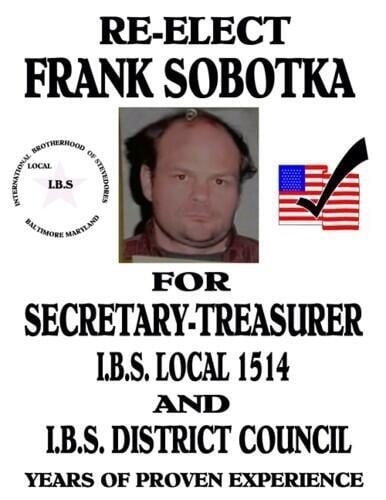For reference, the price for fixed-cost plans is around 10c/kWh.
As someone who’s been constantly running an electric heater in the garage while painting my car, I was quite lucky with the timing.
It’s not literally free, though. Transfer prices are fixed, and there are taxes and some other minor costs associated with it, so where I live, it still adds up to around 6c/kWh even when the price drops to zero. The cheap prices are due to an excess of wind power, but once the wind dies down, prices usually spike hard.
I initially read that as 0.11/kWh and was wondering why that was such a big deal since I pay $0.13/kWh. Then I noticed the c.
December-January we’ll probably see prices 1000-3000% higher than that again. Wish we had more nuclear reactors.
Agreed. We should build much more of it to the point where we’d basically be powering our southern and western neighbours too.
So you have prices 5000% larger all year around?
Posting this again because some people don’t realize just how expensive nuclear really is.

As fossil burning has been left behind and there isn’t enough storage for renewable energy, nuclear is our best option currently.
It’s way cheaper to build storage than new nuclear.
You seem to think nuclear power is cheap. It is not. Renewable energy with storage is much cheaper.
It’s a great example to show electric energy based on wind, water, solar is the way to go - not only because it’s more environmentally friendly than fossil fuels of any kind or nuclear, but it’s economically better as well.
Thanks for sharing!It’s more of an example of how we don’t have anywhere near enough storage for existing renewables.
It’s fair pointing out the lack of (sufficient) storage for electric energy, but I’d say the average price of electricity in Finland for the past week indicates both capabilities of renawables and lack of storage.
This is actually an area that’s developing quite quickly. In 2023, California managed to put almost 14mw worth of storage on the grid; if they keep building out at that rate, peaky/transient power sources like wind and solar will have someplace to park until someone needs that energy. Almost 12mw of that was utility storage; it’s like the utilities have the chance to get out of the business of producing power themselves and into the role of renting storage (or buying surplus energy then selling it later when it’s needed)
Granted, 14mw isn’t a lot in the scale of California, but the rate of growth in grid-storage over time is humongous
10gwh is last report I have of CA utility battery storage.
I have nothing against nuclear energy personally. I wish we’d build more of it. Currently about 2/5th is wind power, 2/5th nuclear and 1/5 hydro. When there’s no wind and it’s cold outside we see prices in the 30 - 70c/kWh which is insanely expensive. If we had huge storage capacity and much, much more wind turbines then maybe it could work.
Compared to fossil fuels I tend to prefer nuclear as well, because even though mining uranium has quite some ecological impact including emitting carbon emissions, running a nuclear power plant doesn’t have carbon emissions and that’s important.
What worries me is that there are nuclear power plants around the world and despite the first nuclear power plant having been built 70 years ago, not a single ultimate disposal place for the radioactive waste has been found/created.
Having “cheap” electric energy for 3-4 generations and putting a burden on the next 40,000 generations just does sound like a bad deal to me.
Until we have more wind and hydro, keeping nuclear running might be a price we have to pay.
Not being able to dispose of some more (thousands of) tons of radioactive waste is making the problem only quantitatively worse and not qualitatively.not a single ultimate disposal place for the radioactive waste has been found/created.
Onkalo spent nuclear fuel repository
Also something to keep in mind is that high level waste which is the spent fuel is only about 3 - 5% of the total radioactive waste from nuclear power plants. Majority of the waste has way lower levels of radiation and it’s things like reactor parts and safety equipment.
I stand corrected regarding ultimate disposal and apparently they are planning to use it in a clever way.
Thank you for letting me know!Well it’s also the first and only one of its kind so you weren’t too far off.
cries in swedish
Do you have fully dynamic prices? Does the price have a upper bound or is it the responsibility of the customers to check the price every time so they won‘t receive a bill of 100€ for making hot water? Very interesting thank you :)
I don’t remember the exact statistics but around half of Finns have plan similar to mine where the prices change hourly. So far it has been cheaper on the long run but there are days when the prices are so high that you basically have to turn off heating or it’ll cost you hundreds in one day. There is no upper limit to it but there’s no lower limit either. Sometimes it goes to negative as well. Last year there was a day when it went so far into negative that people were earning money by running electric heaters outside in the winter.
Interesting to hear the differences. I’m on a similar plan in the UK.
For us the prices changes every 30 minutes and there’s a maximum unit price. I believe it’s £1 per kWh maximum, but I’ve never seen anything over 65p. There a peak price window every day between 4pm and 7pm where the price has an extra multiplier applied, and that’s when you can get the high prices.
Overall I’m saving hundreds of pounds a year over a normal plan, and can change plan within 24hours if I ever feel it’s the wrong choice. This last weekend for us with the unit price around zero Saturday night, Sunday daytime (before peak) and Sunday night when it went slightly negative.
Nordic energy market is capped between -0,5€ - 2,00€/kWh (upper limit might go up if needed). Average market price for last 30days was 0,05€/kWh, which is fairly normal. Price currently is per hour, but market will change to 15min next year.
In Finland, we pay distribution separately, it is commonly 0,02€-0,05€/kWh, depending on the grid company.
On top of that there is electricity tax which is 0,03€/kWh.
Total is something around 0,12-0,15snt/kWh.
USD?
Euros but it’s basically the same in USD
In Malaysia it’s rm0.218/kwh, around €0.05. I wonder if they will chop down the electric price further if they switch to these renewable so AC is much more accessible for low income family. Feels like sauna here whenever it’s sunny day and would be worst in the future.
There are still costs attached to maintaining the network that provides electricity, so it can’t really be free unless it’s nationalised and paid for by taxes (which still isn’t free).
Well, in Malaysia, our electricity is provided by TNB, which is state owned company, and power generation so far is mostly coal and natural gas. The pricing is controlled by government, but since the price is at a low side globally, it’s heavily subsidised. Though the pricing is tiered, the more you use the more expensive it get per kwh.
I doubt they will be free, just lower the price a bit more for the first tier and everyone will be happy.
Thank you. I didn’t know that.






